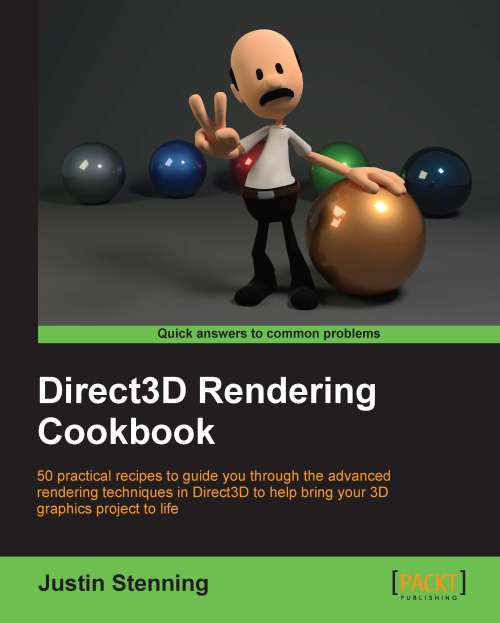Reviews for Direct3D Rendering Cookbook
Having fallen in love with C# some years ago, and more willing to lose my favorite toe than go back to C++ ever again, this book is exactly what I needed. SharpDX makes it possible to continue with XNA type graphics development in C# and DirectX 11, but it’s not easy to get help or anything besides reference docs at the time of this review. This book serves as a comprehensive manual for SharpDX development that is timely and sorely needed. It’s the only book of it’s kind and fills an important and useful purpose, what else needs to be said? If you’ve been messing with SharpDX, buy this book and read it cover to cover.
5 stars – Richard Marinaccio @ Amazon.com
I am impressed by the writing style. From start to finish, each topic is explained clearly in detailed step-by-step instructions…Good introduction for those new to DirectX 11, and also covers some topics that will be of interest to more experienced coders.
5 stars – S J MCGLINCHEY @ Amazon.co.uk
I loved this book, even if you are not a C# developer, you can port/include these techniques to/in your C++ engine. If you are just starting out, this may not be the book for you, if you have been working with earlier versions of DX and looking for an interesting read, then I don’t think you can go wrong with this book.
Charles Humphrey @ http://xboxoneindiedevelopment.blogspot.com.au/2014/02/direct3d-rendering-cookbook-by-justin.html
…Direct3D Rendering Cookbook is a great starting point for those looking to jump into 3D rendering, and even remains relevant once the basics have been covered by providing reference information about advanced shaders and techniques that you may want to make use of later…
…I would recommend this book to anyone who is interested in having a solid resource for 3D development that will last them past the basics…
Michael @ http://mquandt.com/blog/2014/02/review-direct3d-rendering-cookbook/
All in all, as you see, a lot of knowledge + interesting topics + good execution.
Final mark: 4/5
